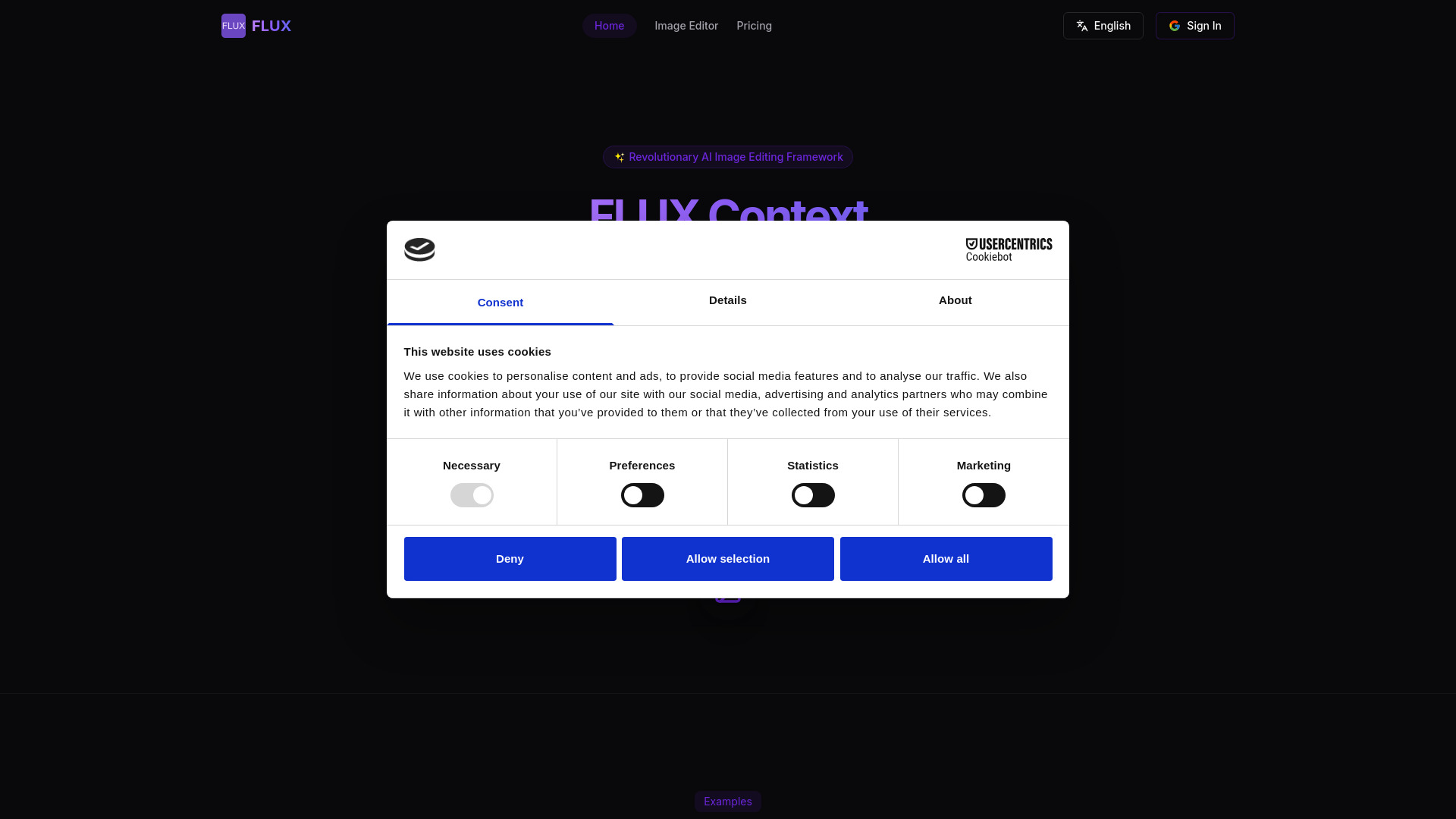- Home
- AI Background Remover
- flux context

flux context
Open Website-
Tool Introduction:AI image editor for consistent, non-destructive, diffusion-powered edits.
-
Inclusion Date:Nov 04, 2025
-
Social Media & Email:
Tool Information
What is flux context AI
flux context AI is an advanced AI image editing platform built on diffusion technology to deliver precise, context-aware edits. It unifies multiple tasks—such as inpainting, background replacement, relighting, and style adjustments—inside one consistent workflow. By preserving scene context and visual identity across edits, it maintains coherence through many iterations without quality loss. The tool reduces manual steps, improves accuracy, and speeds up production, making complex image manipulation faster, more reliable, and easier to scale for creative and commercial teams.
Main Features of flux context AI
- Context-aware editing: Maintains scene and subject coherence across multiple edits for consistent results.
- Diffusion-powered precision: Advanced generation and refinement for clean edges, realistic lighting, and fine detail.
- Multi-task toolkit: Inpainting, outpainting, background removal, relighting, color grading, and style transfer in one interface.
- Iterative workflow without degradation: Edit repeatedly while preserving quality and visual continuity.
- Reference-guided consistency: Use reference images or prompts to keep brand identity, colors, and styles aligned.
- Masking and controls: Region-specific edits with adjustable strength, guidance, and noise levels.
- Batch processing: Apply uniform edits at scale for catalogs, campaigns, or datasets.
- Non-destructive history: Revert, compare versions, and refine without losing previous states.
- High-resolution output: Upscale and export production-ready images with minimal artifacts.
- API/automation ready: Integrate workflows into pipelines for e-commerce, media, or apps.
Who Can Use flux context AI
Ideal for photographers, designers, and art directors who need consistent edits across many images. E-commerce and marketplace teams can standardize product photos at scale. Marketers and agencies can maintain brand style while iterating quickly. Game, CGI, and media studios can refine concept art and key visuals. Social media creators benefit from fast background swaps and style tuning, while developers can leverage the API for automated image enhancement.
How to Use flux context AI
- Import images: upload single files or a batch set for consistent processing.
- Set context: optionally add reference images or define style, color, and brand constraints.
- Select a task: choose inpainting, background replacement, relighting, style transfer, or combined steps.
- Mask and prompt: mark target regions and provide text prompts or parameters to guide the edit.
- Tune controls: adjust guidance strength, detail level, lighting, and color balance.
- Preview and refine: generate variations, compare versions, and iterate without quality loss.
- Apply at scale: replicate settings to a batch for uniform results across a series.
- Export: download high-resolution outputs in your preferred format.
flux context AI Use Cases
E-commerce catalogs with consistent backgrounds and lighting; brand campaigns that require uniform color grading and style; product relighting and shadow recreation for marketplace images; creative retouching and inpainting for editorial photography; previsualization for film, TV, and game assets; restoration and cleanup of archival images; iterative concept art variation while preserving character identity and scene coherence.
flux context AI Pricing
Pricing and plan details are typically provided on the official website. Options commonly include tiered subscriptions or credit-based usage, with higher tiers unlocking larger image volumes, advanced features, and API access. Check the current plans for any free trial or limited free tier designed for evaluation.
Pros and Cons of flux context AI
Pros:
- Strong visual coherence across multiple editing rounds.
- Unified toolkit reduces tool switching and manual steps.
- High-quality, diffusion-based edits with realistic lighting and detail.
- Efficient batch processing for large-scale image workflows.
- Non-destructive, iterative refinement with version control.
- Reference-guided consistency for brand and identity preservation.
Cons:
- Advanced controls may have a learning curve for new users.
- Prompt sensitivity can require iteration to match creative intent.
- Very fine typography or micro-details may need manual touch-ups.
- Large-scale or high-resolution processing may incur higher usage costs.
- Cloud-based workflows can raise data privacy or connectivity considerations.
FAQs about flux context AI
-
How is flux context AI different from standard photo editors?
It uses diffusion-based, context-aware editing to preserve coherence across iterations, reducing manual work and inconsistencies.
-
Can it keep brand colors and subject identity consistent?
Yes, reference-guided controls help maintain color palettes, styles, and identity across images.
-
What kinds of tasks does it support?
Inpainting, outpainting, background replacement, relighting, color grading, style transfer, and batch editing.
-
Is it suitable for large catalogs?
Batch processing and reusable presets make it well-suited for high-volume product imagery.
-
Does it offer an API?
An API is typically available for automation and integration; check official documentation for access and limits.
-
Can I iterate without losing quality?
Its workflow is designed for iterative refinement while maintaining visual fidelity and coherence.

